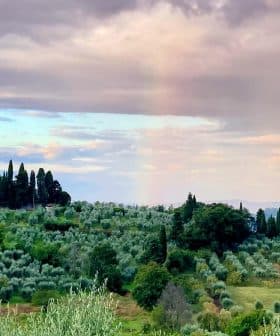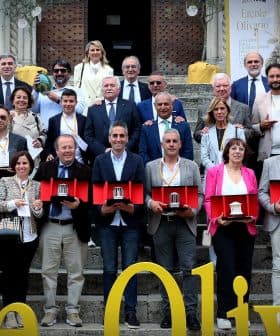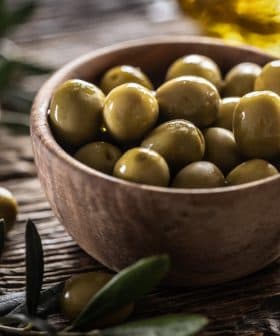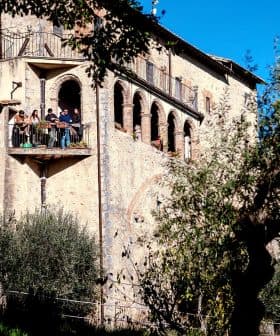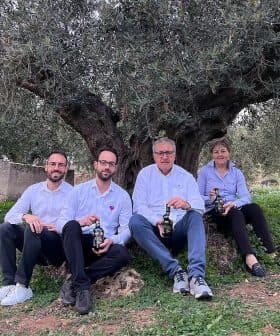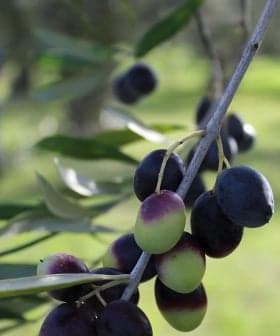Experts in Italy Offer Advice for Olive Growers Combating the Fruit Fly
Careful monitoring of traps and applying treatments at the right times are among the keys to preventing extensive damage from the olive tree pest, experts say.
 Bactrocera dorsalis
Bactrocera dorsalis 9.5K reads
9.5K readsThe Tuscan Regional Phytosanitary Service has released guidelines for monitoring and controlling the olive fruit fly population, a harmful pest for olive trees, in Tuscany. The instructions focus on adapting techniques according to the development cycle of the fly, emphasizing the importance of prevention due to the lack of alternative treatments in organic farming and the withdrawal of the systemic organophosphate insecticide Dimethoate.
The Tuscan Regional Phytosanitary Service has released technical guidelines for monitoring and controlling the olive fruit fly population by growers and technicians working on organic and integrated farms.
Considered one of the most harmful olive tree pests due to the damage they cause to both the quantity and quality of the fruit, this dipterous insect is found in the Mediterranean basin, South Africa, Central and South America, China, Australia and the U.S.
Prevention should be the main focus of an effective and sustainable approach.
The instructions, provided by the experts focused on the situation in Tuscany can be adapted by farmers according to the development cycle of the fly, which can vary depending on the soil and weather conditions of the olive growing area.
“In European countries, the challenge arising from the ban on Dimethoate requires a new approach in the control of the olive fly,” said Massimo Ricciolini of the Tuscan Regional Phytosanitary Service. “Yet, considering the widespread need of sustainability, we believe that not only phytiatric reliability but also toxicological and environmental safety should be at the base of any efficient strategy against this pest.”
See Also:Farmers Warn Pesticide Ban Jeopardizes Italy’s Olive Oil ProductionThe market withdrawal of the systemic organophosphate insecticide Dimethoate, which was used against the larvae of the fly, has led experts to consider the adult stage of the insect as the main goal of the fight.
“Prevention should be the main focus of an effective and sustainable approach,” Ricciolini said. “There is no alternative in organic farming at this time, so while we wait for the research results on new valid curative treatments (i.e. against eggs and larvae), it is necessary to implement techniques to kill or repel the adults.”
“It is important to note that in our region the fly completes its first annual generation in spring,” he added. “The insect uses the olives that remain on the plants, due to incomplete harvesting or abandoned olive groves, as a reproductive substrate and food source. Hence, between the end of June and early July, usually, the second flight of the year, which is larger than the first one, occurs.”
The females deposit their eggs in the olives of the current year, which are already receptive and usually at the beginning of the stone lignification process.
“From these eggs, the second generation of the year, which is the first of the summer, emerges,” Ricciolini said. “The green, growing fruits are then damaged by the activity of the larvae which, passing through three stages, develop at the expense of the pulp, digging a tunnel in the mesocarp that is at first superficial and threadlike, then deep and with a larger section, and, finally, surfacing at the elliptical section.”
“According to the season, the mature larvae drop to the ground to pupate or, when the pupal stage is completed, the adults eclose [emerge from the pupal case],” he added.
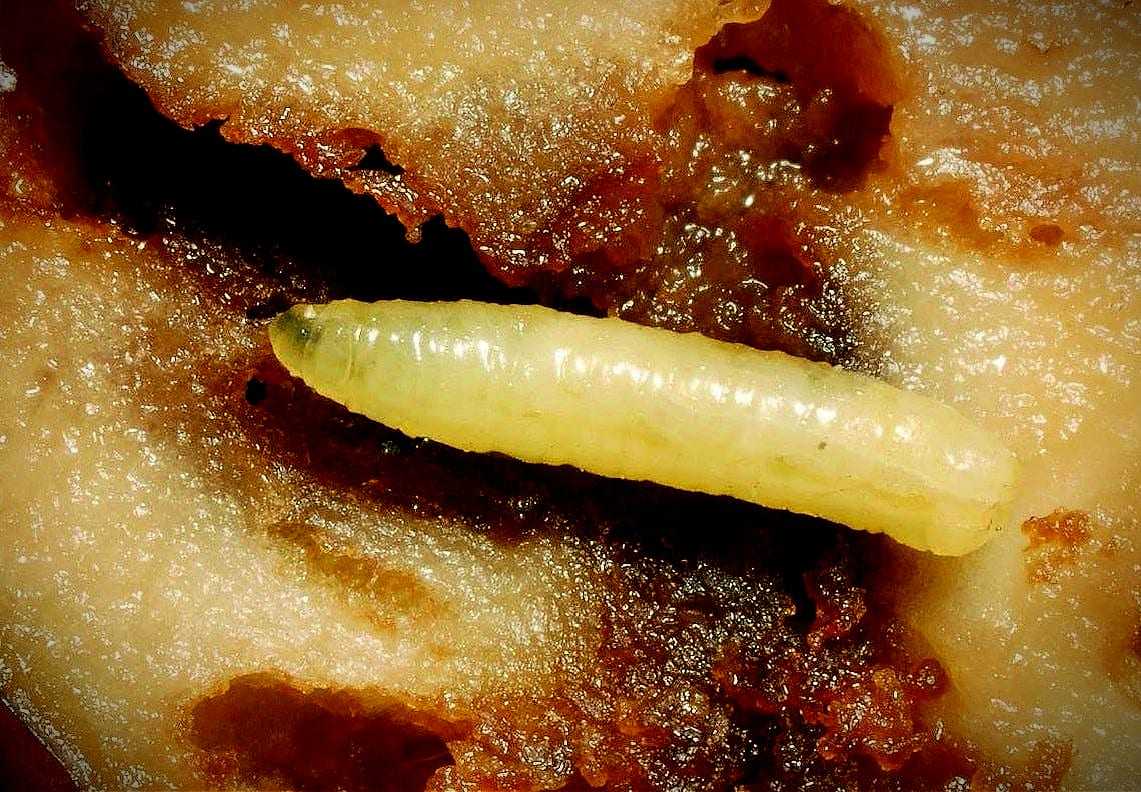
During the warmer months, periods of high temperatures (above 30 to 33 °C — 86 to 91.4 °F) and low levels of relative humidity (below 60 percent) can cause the death of substantial parts of eggs and young larvae population, with consequent potential harm reduction.
The fly populations generally increase considerably in September and October, causing a risk of progressive damage until the harvest, due to both fruit drop and oxidative processes affecting the holed olives. In order to prevent oviposition and larval development, growers should carry out an early harvest, which is effective especially in years of high infestation.
“In Tuscany, with all due exceptions, the risk of attacks is usually greater along the coast, and tends to decrease toward the inland areas, high hills, and the Apennines,” Ricciolini said. “In the last 15 years, increased knowledge about olive fly biology and the setting up of an extensive agrometeorological and demographic database have made it possible to define a climate-based infestation risk forecast model.”
“It showed that, in our territory, low temperatures in winter act as a limiting factor for this insect and that the survival rate of its populations in winter influences the populations of the spring generation,” he added.
The suggestion is to monitor both the adult population dynamics, starting from the first annual flight, and the olive infestation trend, starting from the second flight of the year.
The flight monitoring should be carried out, on a weekly basis, with chromotropic or pheromone traps (one to three traps for a standard one-hectare/2.5‑acre plot with 280 olive trees); the infestation monitoring should be carried out, on a weekly basis, sampling of 100 olives per olive plot (considering an average one hectare/2.5 acre with 280 olive trees).
If the infestation exceeds the threshold of five percent (given by living eggs, first and second age larvae) or 10 percent (given by living eggs and first age larvae), it is possible to proceed with the use of the allowed larvicide products.
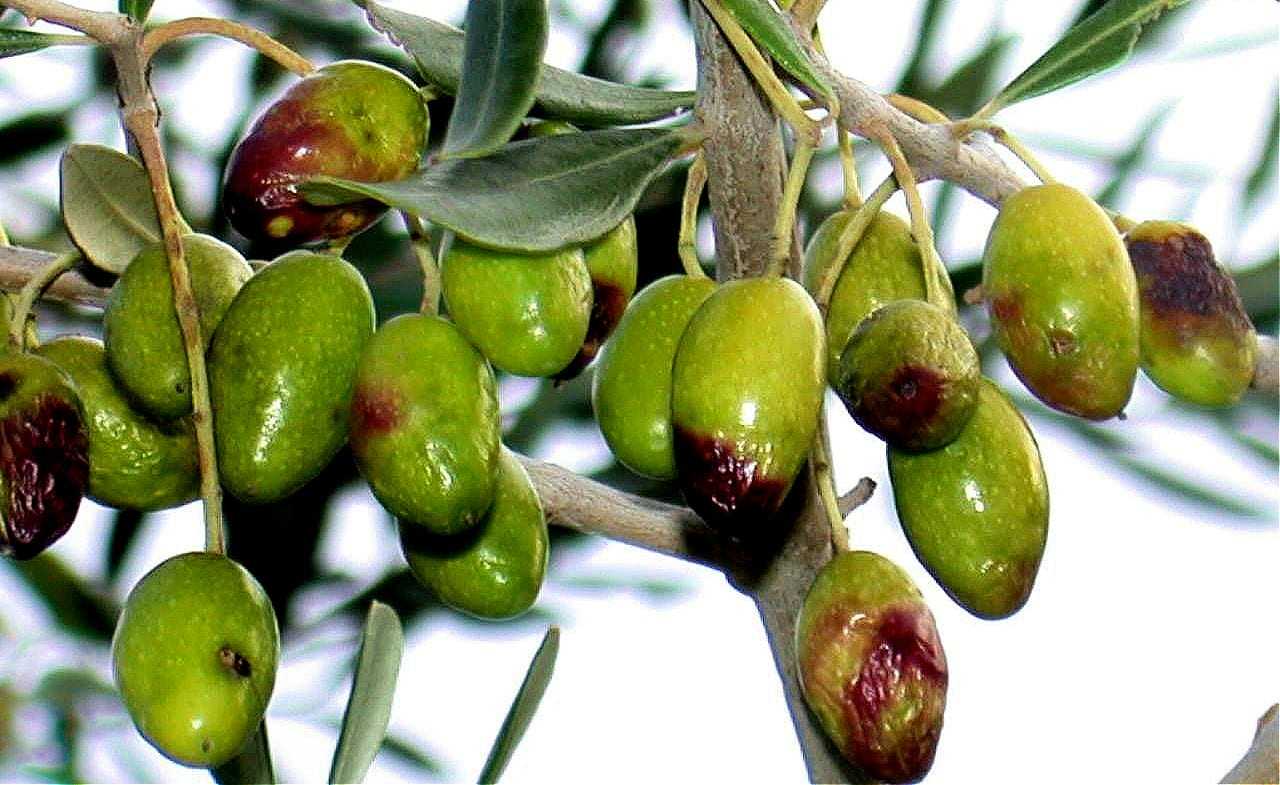
Olives damaged by the olive fly (Tuscan Regional Phytosanitary Service.)
Within this framework, based on the knowledge of the territory and the harmfulness of attacks in terms of frequency and intensity, the experts stress the importance to implement a deterrent and/or killing action against the first summer adults.
“We must consider that some devices and products perform best in vast orchards,” Ricciolini said. “Others tend to be more efficient in small plots.”
Large olive groves (more than five hectares/12.4 acres) require devices or bait products with an ‘attract and kill’ action which aim to lure males and females adults to a food or pheromone source and then kill them by ingestion (of the poisoned bait) or by contact (with the active surface of the device).
Pheromone and insecticide traps available on the market, as well as handmade traps containing protein baits are extensively used and effective; moreover, the natural insecticide, Spinosad, is allowed in several countries.
In small plots it is recommended to use products with repellent action against males and females and with anti-oviposition effects against females, such as copper, kaolin, other minerals such as zeolith and bentonite, and a compound based on fungus, Beauveria bassiana. Research is ongoing on the latter two treatments.
Growers in integrated farming can use, where allowed, insecticides based on Phosmet (organophosphate), Acetamiprid (neonicotinoid) and Deltamethrin (in Italy, this pyrethroid ester can be used only in the traps).
“In all cases, the aim is to prevent oviposition,” Ricciolini said. “In our region, this implies acting against the adults of the first summer flight, that occurs in late June to early July. We should consider as critical parameters the first captures of adults in the traps, the very first oviposition holes and the pit hardening in the fruit.”
The Tuscan Regional Phytosanitary Service offered final general suggestions:
- It is necessary to identify the defense technique (i.e. the type of products) that one intends to use against the olive fly before the start of the olive campaign, in order to get an idea of the intervention period, taking into account the seasonal weather trend and the development and growth of the olives.
- The choice of the technique (i.e. the product) should be made taking into account the risk of infestation and loss of production in the area where the olive grove is located. Usually, the risk is higher along the coast, and lower inland and at higher altitudes. Furthermore, it is important to consider the expected production: the risk is higher in an off-year, lower in an on-year.
- It is important to estimate, based on the production and phytosanitary characteristics of the year, the extent of the damage and loss of production that one can handle.
- If, during the campaign, the strategy adopted or the product used is not effective, try to integrate the products choosing those recommended and allowed in the region.
“From the second summer flight on, preventive interventions can be decided by taking into account the duration of action of the product used, the completion of the previous preimaginal (i.e. development stage that immediately precedes the adult) stage of the insect, the first catches of adults of the previous generation, and the very first oviposition holes of the new generation,” Ricciolini said.


